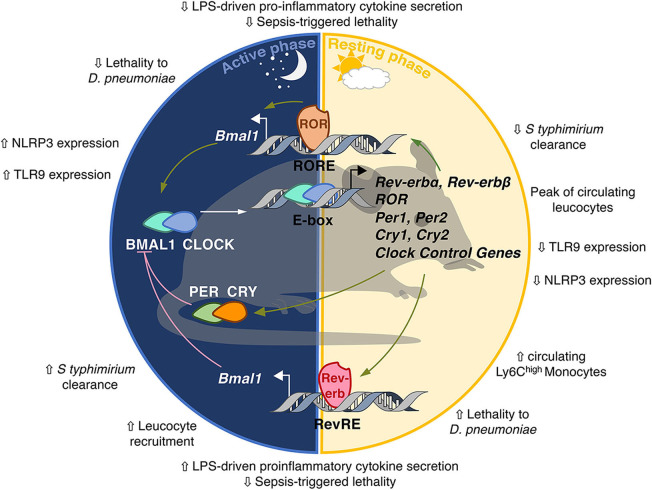Figure 2.
The molecular circadian clock in mammals. The molecular clockwork is formed by transcription–translation feedback loops. The transcription factors BMAL1/CLOCK induce the expression of E-box-containing genes including the negative regulators Period (PER) and Cryptochrome (CRY). In turn, the PER/CRY heterodimer inhibits the transcriptional activity of BMAL1/CLOCK. Once PER and CRY levels are sufficiently low, a new cycle may start. CLOCK/BMAL1 induce the expression of the nuclear receptors Rev-erbα/β and retinoid-related orphan receptor α, β, and γ (RORα/β/γ). Rev-erbs and RORs interact with co-repressors (NCoR) and co-activators (NCoA) and compete for the binding of RevRE/RORE elements in common target genes to repress or activate, respectively, their transcription. Rev-erb and ROR are also able to repress E4BP4/Nfil3 which rhythmically inhibits D-box-dependent transcription. Additional layers of regulation of circadian gene expression include rhythmic histone modifications, circadian chromosomal 3D conformation and post-translational modifications such as acetylation, phosphorylation, sumoylation, O-GlcNacylation.The clock is involved in the control of so-called circadian immunity.

